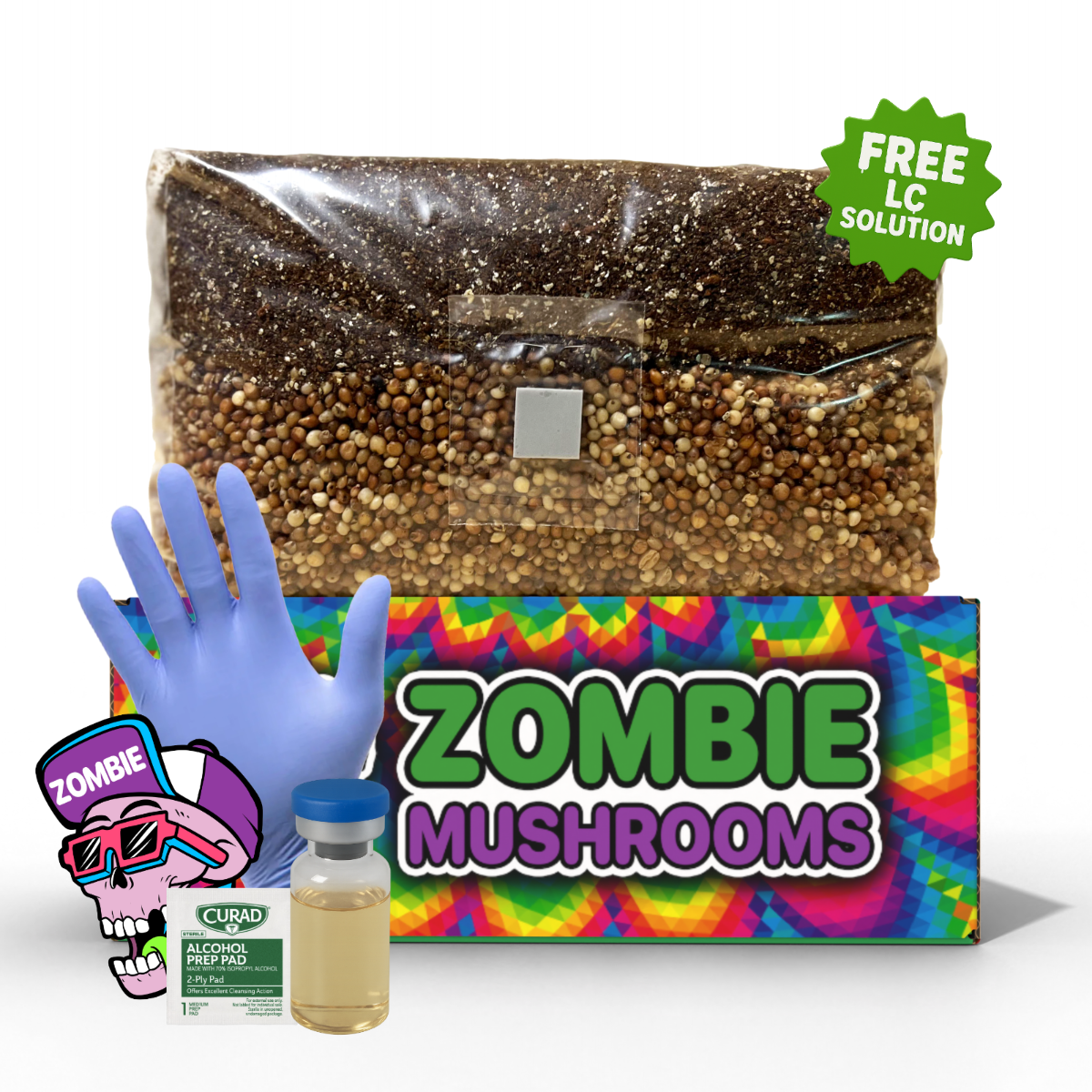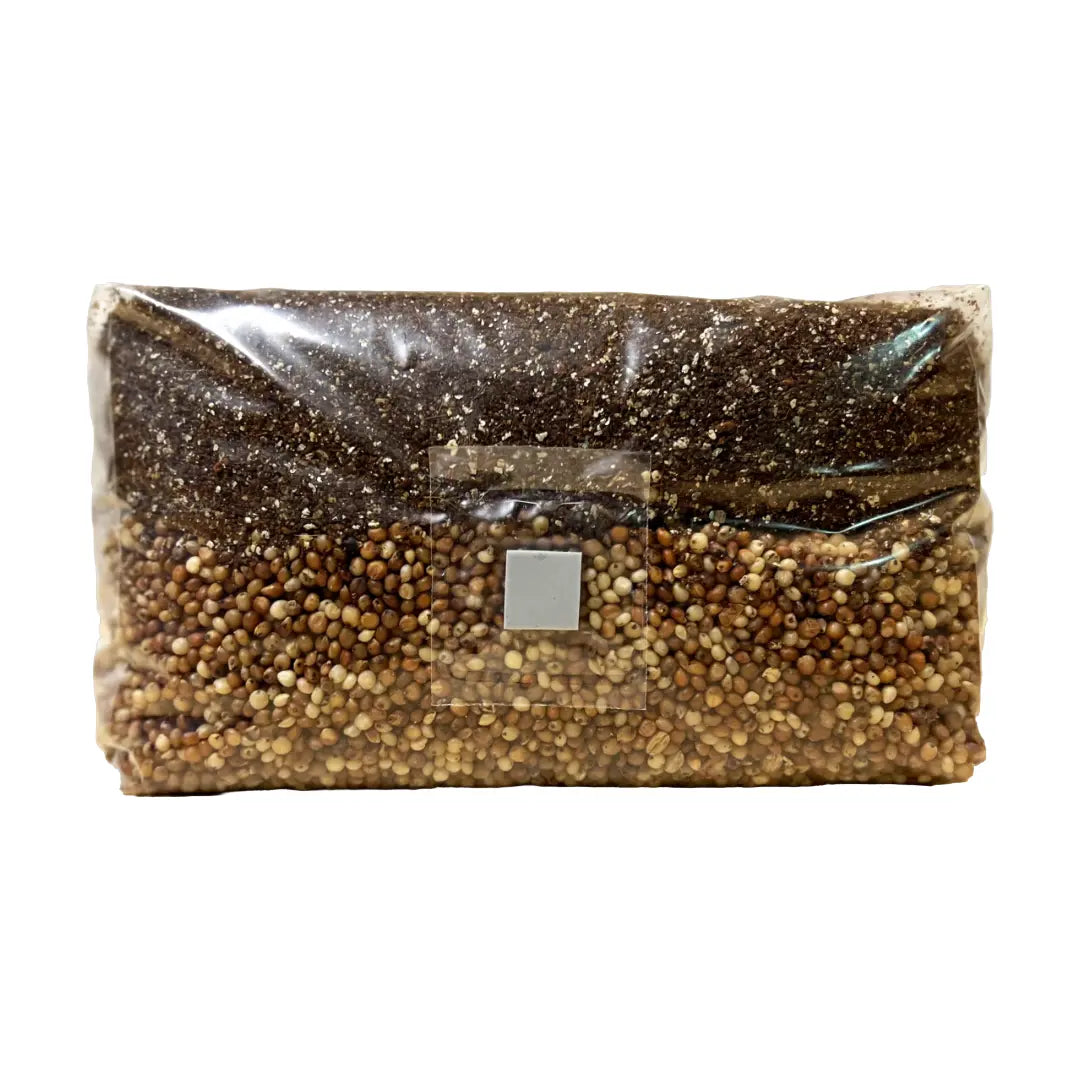⬇️ Prefer to listen instead? ⬇️

- The global market for growing mushrooms is getting bigger fast. People want functional foods more, and they want sustainable farming.
- Most people starting out can grow mushrooms well with less than $150 worth of basic tools and gear.
- Different mushrooms need certain tools, substrates, and ways to control their vironment.
- What tools you need next depends on how much you grow. A small grow kit setup is not enough for growing mushrooms for sale.
- Tools like filter patch grow bags, humidifiers, and ways to control temperature really help you get good results.
The world of mushroom cultivation is expanding fast—more people want fresh, home-grown fungi and the benefits they bring. But the real question isn’t can you get fancy gear—it’s what equipment do you need at each stage of growth. You don’t need a full lab to grow oyster or shiitake mushrooms at home. Simple setups like mushroom grow bags with basic tools can get you great results. This guide helps you pick the right equipment for your size, schedule, and species—whether you’re just starting or scaling up to bigger harvests.
Essential Equipment for Beginner Mushroom Growers
You can get going with mushroom cultivation without spending big—what matters is picking the right gear for your early stage. A mushroom grow bag setup is one of the most cost-effective and cleanest ways to start.
Must-Have Tools:
-
Pre-sterilized substrate blocks or ready grow kits: They simplify the start and reduce contamination risk.
-
Spawn (grain, sawdust, or pre-colonized bags) from reliable sources; species like oyster or button are forgiving.
-
Spray bottle for misting to maintain 85-95% humidity during fruiting.
-
Thermometer/hygrometer combo to monitor temperature and relative humidity.
-
Clear plastic tote or mini fruiting chamber; inexpensive and effective.
-
LED or indirect light (≈6500K); enough to signal fruiting without overheating substrate.
Optional But Helpful
You don't have to have these, but they help keep things clean. They also make things safer.
- Disposable gloves: These help stop contamination when you touch substrate or spawn.
- Isopropyl alcohol: You need this to clean surfaces and tools. Clean growing areas are very important. They stop mold or bacteria.
- Basic masks: These can help when you work with spores. They stop your lungs from getting bothered.
All-in-One Grow Kits
If you are new and don't want to mix substrate or add spawn yet, an all-in-one kit is best. These kits have everything. They have substrate with spawn already growing, grow bags, how-to guides for misting, and sometimes tips on light. You just mist the bag every day and wait for mushrooms to grow.
Starter Setup for Less Than $150
Here is a setup that doesn't cost much. It lets you start growing right away:
| Item | Cost Estimate |
|---|---|
| Grow kit | $25–40 |
| Spray bottle | $5–10 |
| Hygrometer/Thermometer | $15–30 |
| Tub for fruiting chamber | $10–15 |
| LED light | $20–30 |
| Gloves + mask (optional) | $10–20 |
These basic things make growing easy to start. They help you get good amounts of mushrooms, even if you're totally new to it.

Substrate Materials: The Foundation of Growth
Picking the right growing material is very important. Mushrooms don't grow in dirt like plants. Instead, they grow well on organic materials called substrates. These give the mycelium food.
Best Substrates for Beginners
Each type of mushroom needs certain substrates. Using the right one helps the mycelium spread faster. It also helps you get more mushrooms.
Hardwood Sawdust (Pellet or Loose)
- Great for: Shiitake, Lion’s Mane, Reishi
- Why it works: It is like the natural places where wood breaks down.
- Preparation: You need to sterilize it. But you can buy blocks that are already sterilized from reliable sellers.
- Pro Tip: Use blends with extra wheat bran to get more mushrooms.
Straw (Wheat or Oat)
- Great for: Oyster, Wine Cap, Paddy Straw mushrooms
- Preparation: You need to pasteurize it. You can do this with hot water or a lime soak.
- Recommendation: Cut the straw into 1–3-inch pieces. This makes more space for the mycelium to grow on.
Coco Coir
- Great for: Oyster, Button, King Oyster mushrooms (preferably in blends).
- Good for the planet: It comes from coconut husks and can be used again.
- Mix with: Vermiculite and gypsum. This helps it hold water better and adds nutrients.
Coffee Grounds (as Supplemental Material)
- Good points: They are already pasteurized when you make coffee.
- Mix With: Straw or coco coir. This stops them from packing down tight. Packing tight stops air flow.
- Best For: Oyster mushrooms. They are tough and spread fast.
Composted Manure
- Ideal for: Agaricus bisporus (White Button Mushrooms) and Shaggy Manes.
- Be careful: Only use manure that has been composted well and is old. Manure that is not handled right can bring in bad stuff.

Spawn and Spores: Choosing the Right Inoculation Medium
Spawn is like seeds for growing mushrooms. Picking the right kind is very important for your harvest.
Types of Spawn
Each type works in different ways. What you should use depends on your substrate and how you plan to grow.
| Type | Key Applications |
|---|---|
| Grain Spawn | Most versatile—ideal for bulk substrate grows |
| Sawdust Spawn | Excellent for wood-loving fungi like Reishi, Shiitake |
| Plug Spawn | Perfect for outdoor logs or stumps |
| Liquid Culture | Ideal for sterile lab environments to speed up inoculation |
Tips for Spawn Success
- Store it right—keep it in the fridge for up to 6 months so it stays alive.
- Let it warm up to room temperature a day before you use it.
- Use 5–10% spawn compared to the weight of your substrate. This helps the spawn spread as much as possible.
Use good spawn and know if it works with your substrate. This makes it much more likely you will get a good harvest.

Choosing the Right Container: Bags, Tubs & Other Options
The container you use can make a big difference in yield, cleanliness, and ease of work. Here’s a quick guide:
Filter Patch Grow Bags
- Design: They have filters built in. These let air pass through but keep bad stuff out.
- Sizes: From small 2.5 lbs bags to larger 10 lbs volumes.
- Often used for: Sterilized blocks that are ready to fruit.
- Where to get them: You can buy them from growers like Zombie Mushrooms. They often come filled already, which is helpful.
Plastic Tubs
- Great for DIY: They don't cost much. You can change them a lot.
- Airflow: Drill holes in the sides. Fill the holes with polyfill or micropore tape. This acts like Fresh Air Exchange (FAE).
- Easy to use: You can stack them. You can also turn them into a shotgun fruiting chamber (SGFC).
Mason Jars
- Best for: Growing spawn. Especially grain spawn and liquid cultures.
- What kind to use: Jars with wide mouths. They are easier to get into and clean.
Outdoor Log Beds
- Lasts a long time: Put plug or sawdust spawn in logs. The logs can produce mushrooms for years.
- Easy to care for: Good for people who have outdoor space with shade.

Environmental Control Tools for Reliable Mushroom Growth
Healthy mushrooms depend on stable conditions—temperature, humidity, airflow, and light. Having the right gear makes it easier to create a productive environment:
Temperature
- Colonization ideal: 75–80°F (24–27°C)
- Fruiting range: 55–75°F (13–24°C), depends on the mushroom type
Tools
- Digital thermometer: To check the temperature all the time.
- Heat mat with thermostat: Use this when it's cold.
- Ways to cool: Basements with shade, fans, or air conditioners when it's warmer.
Humidity
- Colonization: 60–70% Relative Humidity (RH)
- Fruiting: 85–95% RH. This is very important for pins to form.
Tools
- Manual: Spray bottle for small setups.
- Automatic: Ultrasonic humidifiers, foggers, or pond foggers in bigger spaces.
- How to check: Cheap hygrometers make sure moisture stays the same.
Air Exchange
Not enough fresh air leads to too much CO2. This makes mushrooms look "leggy". It also makes them grow weakly.
Solutions
- Passive ways: Tubs with holes drilled in them and filled with polyfill.
- Active ways: Small fans, air pumps for hydroponics, or even blowers with HEPA filters built-in.
Lighting
- What's needed: Mushrooms need light to start making fruit bodies. But not strong or direct sun.
- Best choice: Use a 6500K LED bulb. Keep it on for 12 hours, then off for 12 hours. This is like daylight.
- Don't use: Grow lamps that give off too much heat. They can dry out your substrate.

Beginner vs. Intermediate vs. Commercial: When to Upgrade
As you get better and grow more, your mushroom growing gear should change too.
| Feature | Beginner | Intermediate | Commercial |
|---|---|---|---|
| Sterility Setup | Spray bottle & SAB | Still Air Box + Pressure Cooker | Laminar Flow Hood + Autoclave |
| Fruiting Chamber | Storage tote or kit bag | Mini-greenhouse or tent | Fully-automated grow room |
| Spawn Production | Buy pre-made from suppliers | DIY grain jars + agar cultures | Culture library + in-house spawn |
Zombie Mushrooms and places like it make changing between grow levels easier. They have tools for each step.

Do Different Mushroom Species Require Different Tools?
Yes, totally. People often make the mistake of not knowing this.
Substrate Sensitivities
- Oyster Mushrooms: Love straw, coir, and coffee blends.
- Shiitake: Need hardwood sawdust or logs. Don't use compost or straw.
- Reishi: Grow well in sawdust mixed with bran and gypsum.
- Buttons/Crepinis: Need composted manure. It should be well aged.
Environment Requirements
Each kind of mushroom likes different things
- Pink Oyster: Needs heat (75–85°F) and high humidity
- King Oyster: Cooler temps (60–70°F) and lower RH
- Lion’s Mane: Needs air moving all the time. And high humidity when fruiting.
Always look up what a specific mushroom needs. Make sure your tools and methods match the kind you are growing.

Scaling Up: Professional Cultivation Equipment
If your hobby becomes a business, or you grow a lot more, tools that save time and automatic systems become very important.
Mycology Lab Equipment
- Laminar Flow Hood: Gives you a clean area to make agar and move cultures.
- Pressure Cooker/Autoclave: You need this to sterilize grain and tools.
- Agar Culture Supplies: Petri dishes, scalpels, alcohol lamps, disposable pipettes.
Fruiting Systems
- “Martha” Tents: These are tents with shelves. They have fans and humidifiers.
- Environmental Control Units: These have sensors and timers that work on their own for humidity and temperature. (Inkbird is a common brand).
- Airflow Systems: These use inline duct fans with HEPA filters. They keep the air clean where you are growing.
Post-Harvest Tools
- Stainless steel mushroom knives with curved blades: These cut cleanly. They cause less damage to the mushroom tissue.
- Tray or rack dehydrators like Excalibur: These help keep the good qualities of medicinal mushrooms.
- Vacuum sealers: These make your mushrooms last longer. They also help with how you package your product.

Harvesting & Post-Harvest Gear
When mushrooms are ready, you must pick them the right way. This stops them from rotting. It also makes them last longer.
Harvesting Tools
- Curved Knives: Make clean cuts at the bottom. They don't mess up the substrate as much.
- Food-Grade Containers: Use these to move or keep mushrooms you just picked.
- Dehydrators: Very important for keeping medicinal and gourmet types. Like Reishi and Lion’s Mane.
- Packaging: For fresh mushrooms, use bags that let air through. For dried mushrooms, vacuum-seal them so they last a long time.

Can Anyone Grow Mushrooms at Home?
Yes. One great thing about growing mushrooms is that anyone can do it.
Ideal Setups for Small Spaces
You can grow mushrooms well even if you don't have much space or light. Here are some ways:
| Setting | Recommended Setup |
|---|---|
| Apartment | Kitchen counter + fruiting tote + spray bottle |
| Balcony | Straw-filled bags in shaded outdoor spot |
| Closet | LED bar + fruiting tote + small humidifier |
Key Beginner Tools
- Reliable thermometer/hygrometer combo
- Spray bottle
- Grow bags with filter patches
- Disposable gloves for clean handling
FAQ
-
Do I need all the gear listed in the article to grow mushrooms at home?
No. Start with the essentials (substrate, spawn, grow bag or basic fruiting chamber, humidity control) and upgrade only as your yields or goals increase. -
What makes mushroom grow bags a good core container option?
They are pre-sterilized or come with substrate often already prepared, have filter patches for clean airflow, and reduce contamination risk. -
Is expensive environmental control equipment necessary?
Not for small-scale or beginner grows. Basic tools like a spray bottle, thermometer/hygrometer, and indirect light often suffice. More advanced tools are useful when scaling up or for sensitive species. -
Which container works best for beginners?
Grow bags and small plastic totes are great for beginners—they’re affordable, clean, and relatively low risk. -
When should I consider upgrading equipment?
When you start doing multiple flushes, cultivating sensitive or slow species (e.g. Reishi, Lion’s Mane), or increasing harvest size. Then tools like pressure cookers, spawn jars, and environmental controllers become more valuable.
Final Advice: Do You Really Need It All?
No—you need what fits YOUR space, experience, and goals.
Your Growing Path
- Beginner: Grow kit + spray bottle + tote
- Intermediate: Pressure cooker + grain jars + still air box
- Commercial: Lab gear + climate-controlled rooms + branding tools
Start small, be consistent, and add to your tools as your passion and production needs grow.
Additional Resources
- Books: Organic Mushroom Farming and Mycoremediation by Tradd Cotter gives full details.
- Communities: Join r/mushroomgrowers on Reddit or find local mycological societies.
- Suppliers: Zombie Mushrooms has starter kits, bags, grain spawn, and more good tools for growing mushrooms.
Growing mushrooms can be done big or small, changed to fit what you need, and is very rewarding. You can use a small kit in your kitchen or a big grow tent for a business. The right tools help you get healthy, large harvests. If you're growing just to see how it works, for food, or to make money—now is a great time to grow mushrooms at home.



